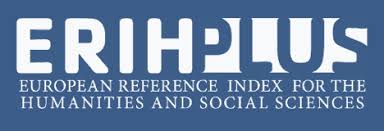№2, 2023
Many experts and scientists focus on cloud computing, mobile Internet technologies, and the rapid development of the Internet of Things in the field of e-learning which caused innovation and revolution. The development of the capabilities of cloud technologies has been applied to solve problems in various fields of human activity, including the educational process. Cloud technologies enable students to actively participate in the preparation of educational content, modify learning methods, increase access to information resources (external memory, applications, educational materials, etc.). Clouds unify physical or virtualized resources in data centers and require less software and hardware.
The goal of this research is to expand and use the possibilities of applying cloud technologies in the teaching process in higher education institutions. As a result of the conducted research, we determine didactic and information opportunities by using cloud services in the educational process. This article reviews scientific research conducted in the field of data mining and cloud technologies in the formation of educational content during the last decade. Moreover, the methods of solving educational content management problems are proposed using data mining methods (pp.75-82).
Arunachalam, A.R. (2014). Bringing out the effective learning process by analyzing of e-learning methodologies. Indian Journal of Science and Technology. 7, 41-43.
Ananchenko, İ.V. (2015). Cloud technologies in higher education. Modern science-intensive technologies. 5, 48-52. (in Russian)
Agilo Research Pvt. Ltd., PictoBlox - Scratch-Based AI Programming Software for Kids. (2020).
https://thestempedia.com/product/pictoblox.
Butko, E.Y. (2015). Formation of educational information resources. Educational resources and technologies. 4, 17-23. (in Russian)
Berman, F., Fox, G., Hey, T. (2003). “Grid computing. Making the Global Infrastructure a Reality”, Wiley. 164.
Bunkar, K., Singh, U.K., Pandya. B., Bunkar. (2012). Data mining: Prediction for performance improvement of graduate students using classification, in: Wireless and Optical Communications Networks (WOCN) Ninth International Conference on, IEEE. 1-5.
Chow, W. (2019). A pedagogy that uses a Kaggle competition for teaching machine learning an 182 experience sharing in: (2019). IEEE International Conference on Engineering, Technology and Education (TALE). 1-5.
doi:10.1109/TALE48000.2019.9226005.
Dhope, R.A. Deshpande S.P. (2016). "Data Mining with Cloud Computing: An Owerview", International Journal of Advanced Research in Computer Engineering & Technology. 5, 1, 211-214.
Ding, Bangxu, Chen, Wen|Huang, Yongqing. (2019). The construction of internet data mining model based on cloud computing. Journal of Intelligent & Fuzzy Systems. 37, 3, 3275-3283.
https://content.iospress.com/articles/journal-of-intelligent-and-fuzzy-systems/ifs179129
Educational Data Mining, 2023
https://www.javatpoint.com/educational-data-mining
Kononyuk, A.E. (2018). Fundamental theory of cloud technologies. A.E. Kononyuk. - Kyiv: «Освіта Украіни». 621 (in Russian)
Kabakchieva, D. (2013). Predicting student performance by using data mining methods for classification. Cybernetics and Information Technologies. 13. (1), 61-72.
Kaggle: Your Machine Learning and Data Science Community. (2022). URL: https://www. kaggle.com.
Long, P. (2011). Penetrating the Fog: Analytics in Learning and Education. P. Long, G. Siemen. EDUCAUSE Rev. 15. (46). 30–40.
Lagman, A.C., Galleja, J.Q., Gonzales, J.G. (2019). Embedding naive Bayes algorithm data model in predicting student graduation ICTCE '19: Proceedings of the 3rd International Conference on Telecommunications and Communication Engineering. 51-56.
Morsy, S., Kapuris, G. Cumulative Knowledge-based Regression Models for Next term Grade Prediction. Proceedings of the 2017 SIAM International Conference on Data Mining. 552-560.
Moretti, C., Steinhaeuser, K., Thain, D., Chawla, N. V. (2008) "Scaling Up Classifiers to Cloud Computers", VIII IEEE International Conference on Data Mining. 472–481.
Nanjang. (2010). "Data Mining of Mass Storage Based on Cloud Computing" Ninth International Conference on Grid and Cloud Computing; IEEE. 211-215.
Ogurtsova, E.Y., Fadeev, R.N. (2021). Big data and digital analytics in university education. noospheric research. 4. 37-44. (in Russian).
Oughdir, L. (2019). Association Rules Mining Method of Big Data for E-Learning Recommendation Engine. Springer Nature Switzerland AG. (2019), International Journal of Information Science & Technology –iJIST, ISSN : 2550-5114.3.2, 11-18.
Oyelade, O. J., Oladipupo, O.O., Obagbuwa, I. C. (2010). Application of k Means Clustering algorithm for prediction of Students Academic Performance. (IJCSIS) International Journal of Computer Science and Information Security. 7, 1, 292-295.
Polyzou, A., Kapuris, G. (2016). Grade prediction with models specific to students and courses. International Journal of Data Science and Analytics. 2, 159–171.
https://doi.org/10.1007/s41060-016-0024-z
Pandagale, A. Surve, A.R. (2016). "Hadoop-HBase for finding association rules using Apriori MapReduce algorithm". IEEE International Conference on Recent Trends in Electronics, Information & Communication Technology. 373-379.
Romero, C., Ventura, S. (2013). Data Mining in Education. WIREs Data Min. Know. Disc. 3. 12-27
https://doi.org/doi:10.1002/widm.1075.
Ramesh, A., Pavlov, M., Goh, G., Gray, S., Chen, M., Child, R., Misra, V., Mishkin, P., Krueger, G., Agarwal, S., Sutskever, I. (2021). DALL-E: Creating Images from Text. https://openai. com/blog/dall-e/.
Seyidametova, Z.S. (2012). Cloud technologies and education. Simferopol. Diapi206 (in Russian)
Shaunda, L. (2010). Wood St. Technology for Teaching and Learning: Moodle as a Tool for Higher Education. International Journal of Teaching and Learning in Higher Education. 22. 3. 299-307.
Saini, R., Behl, R. (2020). An Introduction to AWS—EC2 (Elastic Compute Cloud). The International Conference on Research in Management & Technovation, 99-102.
https://www.researchgate.net/publication/348638365_An_Introduction_to_AWS-EC2_Elastic_Compute_Cloud.
Teachable machine. (2021). https://teachablemachine.withgoogle.com.
Vostinar, P. (2020). Using mBot robots for the motivation of studying computer science. MIPRO 2020 43rd International Convention. 738-742.





.jpg)









